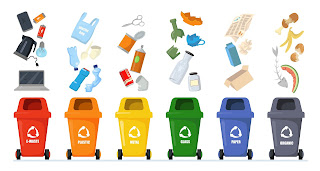The Growing Crisis of Clothing Landfills: Why It’s Time to Rethink Fashion Waste
The fashion industry has undergone a massive transformation over the past few decades, but not all of it has been positive. One of the most alarming outcomes of this shift is the rising number of clothing landfills around the world. With fast fashion trends encouraging consumers to buy more and discard quickly, the volume of textile waste has reached unprecedented levels. Each year, millions of tons of clothing end up in landfills, causing significant environmental and social consequences.
Clothing landfills are not just an eyesore—they’re an environmental hazard. Most textiles are made from synthetic fibers like polyester, which can take hundreds of years to break down. During this time, they release harmful greenhouse gases such as methane and leach toxic chemicals into the soil and water systems. Even natural fibers like cotton can pose issues when treated with dyes and chemicals, making them far from biodegradable under typical landfill conditions.
Adding to the problem is the fact that much of this discarded clothing is still perfectly wearable. In many cases, items are thrown away not because they are damaged, but because they are no longer in style or have been replaced by newer purchases. This points to a deeper cultural issue—one rooted in overconsumption and a lack of awareness about the true cost of clothing. While donating clothes to charity is a popular solution, donation centers are often overwhelmed and unable to process the volume of garments they receive, leading to further landfill overflow.
The global south often bears the brunt of this waste. Unsold and secondhand clothing from Western countries frequently ends up in developing nations, where it can disrupt local economies and still eventually get dumped in poorly regulated landfills or burned, exacerbating pollution and climate issues.
So, what can be done to combat the crisis of clothing landfills? Solutions include slowing down consumption, choosing higher-quality and longer-lasting items, supporting circular fashion initiatives, and adopting responsible recycling and upcycling practices. Brands and consumers alike need to take responsibility for the full lifecycle of clothing.
This is where innovative solutions like SwagCycle come into play. SwagCycle is on a mission to responsibly manage the lifecycle of branded merchandise, including apparel. By helping companies repurpose, recycle, or upcycle unused clothing and promotional items, SwagCycle keeps textiles out of landfills and supports sustainable business practices. Whether through donation, recycling partnerships, or creative reuse strategies, SwagCycle ensures that branded apparel doesn't contribute to the growing landfill crisis but instead finds a new life with purpose. As awareness grows, initiatives like SwagCycle are paving the way for a future where sustainability isn’t an afterthought—it’s the standard.




Comments
Post a Comment